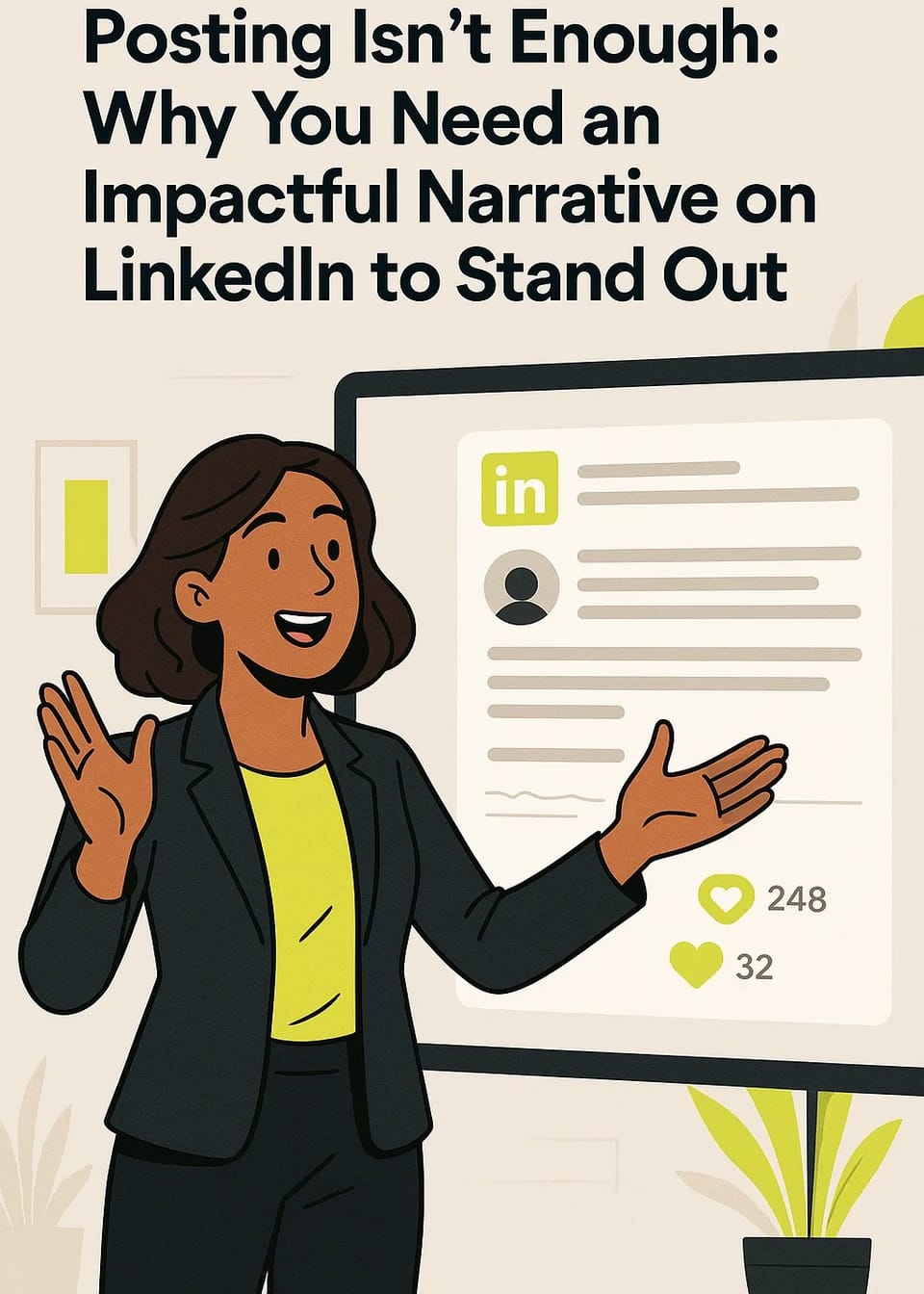Intro: The Algorithm Can’t Feel—But It Can Spot Emotion
Compare these two posts:
"Excited to announce our Q4 initiative delivered 23% growth through strategic optimization."
"At 2 AM, staring at spreadsheets that made no sense, I realized we'd been asking the wrong question for six months. That shift changed everything."
One sounds like a press release. The other makes you want to know what happened next.
Most LinkedIn users broadcast achievements instead of sharing the human story behind the results. Their audience keeps scrolling because there's nothing to grab onto, no reason to care.
The gap between forgettable and memorable isn't more credentials—it's better storytelling.
Here's how to bridge it.
The Feed Has Feelings Now: Why the LinkedIn Algorithm Loves a Good Story
The 2025 LinkedIn algorithm update, revealed during a closed beta tester summit and later confirmed in LinkedIn's public roadmap, emphasizes story quality scoring. Unlike old models that rewarded virality through reactions and shares, the current engine prioritizes posts that contain an arc: setup, insight, and takeaway.
This format is more likely to generate comments, which remains LinkedIn’s most valuable signal of meaningful engagement. Stories aren’t just fluff—they’re algorithmic fuel.
From Résumé Posts to Real Stories: How We Got Here
Back in 2019, a “New Role!” post would flood your feed for days. By 2022, storytelling began trending—but it was mostly anecdotal. In 2023 and 2024, AI-powered content surged, and LinkedIn saw an explosion in templated, low-resonance posts. That’s when the shift began.
In response, LinkedIn’s 2024-2025 updates rewarded posts that:
- Tapped into lived experiences
- Used a conversational tone
- Triggered actual dialogue
Narrative began to win over novelty.
The Emotion Engine: What the LinkedIn Algorithm Rewards in 2025
According to internal developer notes surfaced during a recent Product AMA, the current algorithm uses three key signals to measure narrative quality:
- Story pacing: Does the post build or flatten?
- Relatability factor: Are users from similar job functions reacting and commenting?
- Insight-to-action ratio: Does the story shift from personal anecdote to shared takeaway?
Put simply: if your post reads like a PowerPoint slide, it gets demoted. If it reads like a lunch break conversation with insight—welcome to the top of the feed.
Buzzwords ≠ Stories: The Mistakes Killing Your Narrative Reach
Let’s talk about the resume-post still haunting 80% of LinkedIn feeds. It’s structured like this:
“I’m honored to be recognized as [Title] at [Company] for leading [generic achievement].”
It may sound polished, but it lacks:
- Tension or reflection
- Audience-specific value
- A reason for someone to comment
Avoid buzzword bingo. Instead, share:
- A mistake you made and what it taught you
- A client moment that reshaped your thinking
- A team win that changed dynamics
LinkedIn’s engagement engine favors vulnerability over vanity.
Want to understand how this shift affects growth strategies? Check out Commentify’s article on LinkedIn Engagement Algorithm.
Hero's Journey, But Make It Work-Friendly: Structuring a Narrative That Connects
You don’t need to be Tolkien. Just try this framework:
- Start with a relatable problem: “I used to think promotions were purely performance-based.”
- Describe the tension or discovery: “Then I realized perception shaped opportunity.”
- Land the takeaway: “Now I coach others on storytelling, not just stats.”
It’s familiar, digestible, and more importantly—emotionally sticky.
Narrative = Network Magnet: Real Strategies for Narrative-First Growth
People connect with stories, not summaries. Want more profile views, DMs, and inbound requests?
- Schedule one narrative-driven post per week
- Engage in comments using mini-narratives (yes, even there!)
- Don’t skip captions on videos—use story framing
Bonus: Tools like Commentify help you auto-comment at scale without sounding robotic—meaning you can respond with contextual stories that deepen visibility. The tool is purpose-built for those who value voice over volume.
The Future Feed Will Be Personal: What’s Next for Storytelling on LinkedIn
2025 is the year of narrative. As LinkedIn leans further into AI personalization and topic-based feeds, your story footprint will matter more than your title or follower count.
Expect more:
- Sentiment-based feed filters
- AI-summarized stories in DMs
- Story metrics baked into analytics dashboards
And the professionals who lean into personal storytelling—not just job storyboarding—will stay visible and relevant.
Conclusion: Story > Status Update. Every Time.
If you’re still posting “excited to announce…” and wondering why nobody’s engaging, it’s not your fault—it’s the evolution of the platform.
The LinkedIn feed now prioritizes emotion, reflection, and authenticity. That means:
- Your job description isn’t your narrative
- Sharing real, relevant stories builds connection
- Consistency in storytelling leads to sustainable visibility
So, the next time you draft a post, ask: Would I care if I saw this from someone else?
And when you’re ready to scale your story-first approach, Commentify is your backstage assistant—auto-commenting with human-sounding depth, not robotic fluff.
Because on LinkedIn in 2025, stories sell—but sincerity scales.

